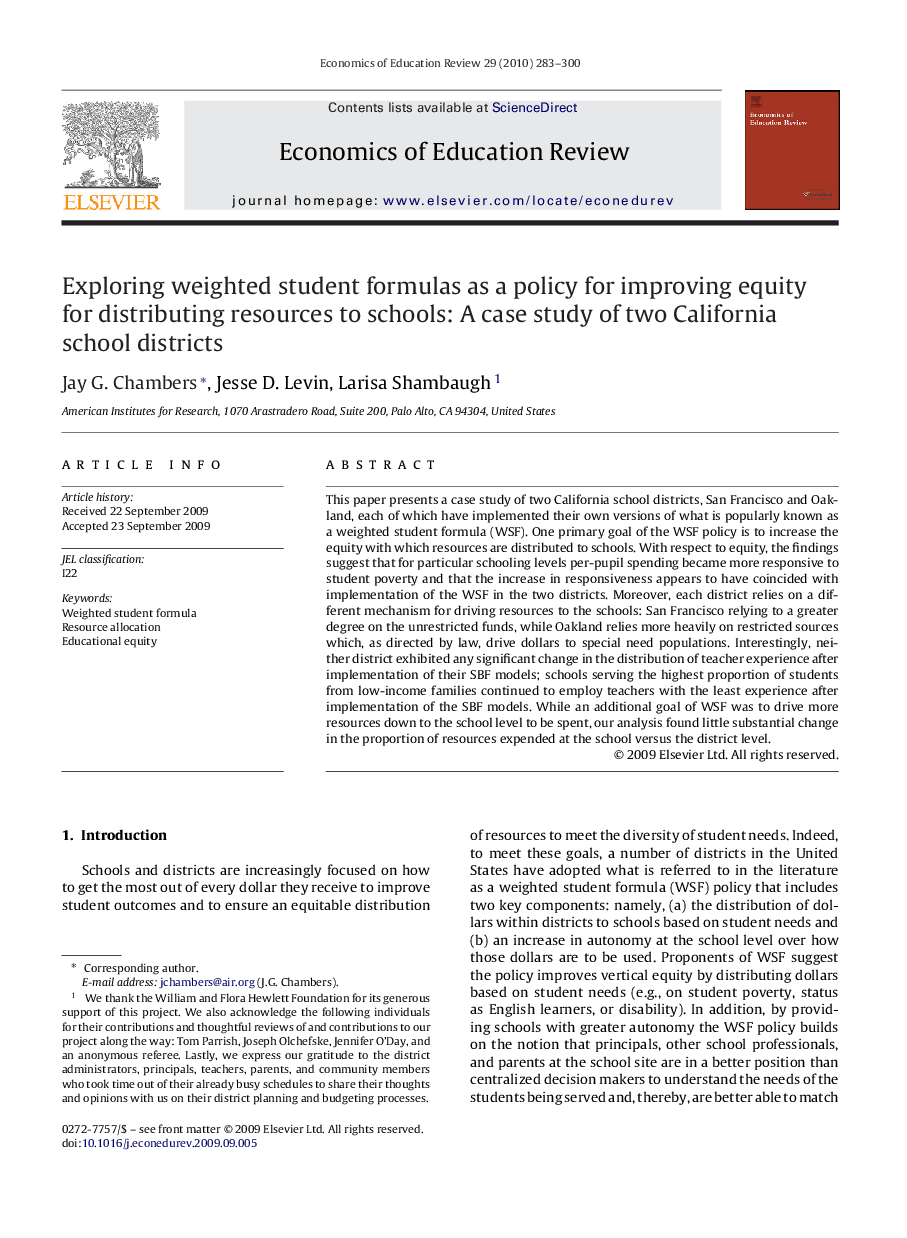| Article ID | Journal | Published Year | Pages | File Type |
|---|---|---|---|---|
| 354819 | Economics of Education Review | 2010 | 18 Pages |
This paper presents a case study of two California school districts, San Francisco and Oakland, each of which have implemented their own versions of what is popularly known as a weighted student formula (WSF). One primary goal of the WSF policy is to increase the equity with which resources are distributed to schools. With respect to equity, the findings suggest that for particular schooling levels per-pupil spending became more responsive to student poverty and that the increase in responsiveness appears to have coincided with implementation of the WSF in the two districts. Moreover, each district relies on a different mechanism for driving resources to the schools: San Francisco relying to a greater degree on the unrestricted funds, while Oakland relies more heavily on restricted sources which, as directed by law, drive dollars to special need populations. Interestingly, neither district exhibited any significant change in the distribution of teacher experience after implementation of their SBF models; schools serving the highest proportion of students from low-income families continued to employ teachers with the least experience after implementation of the SBF models. While an additional goal of WSF was to drive more resources down to the school level to be spent, our analysis found little substantial change in the proportion of resources expended at the school versus the district level.
